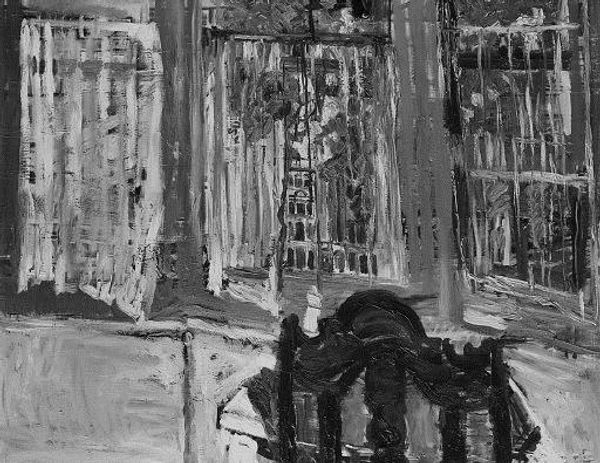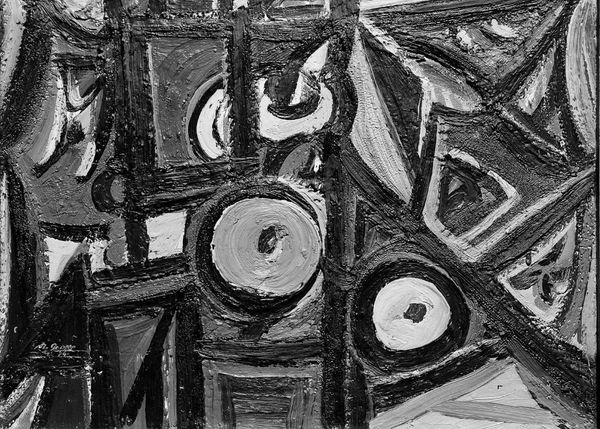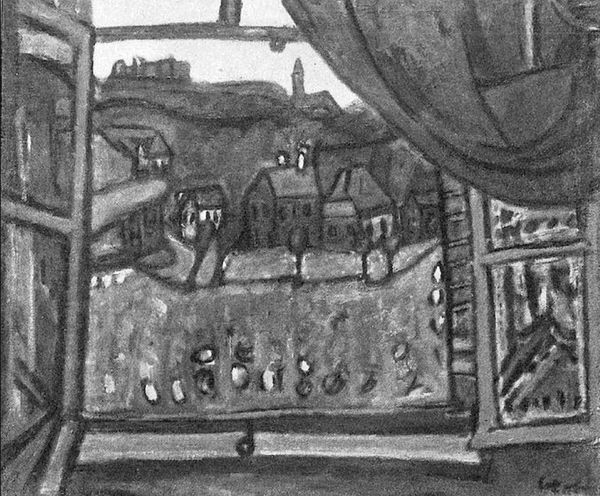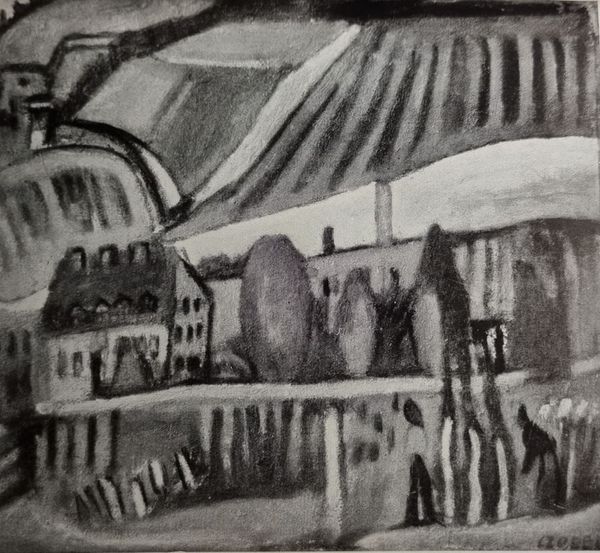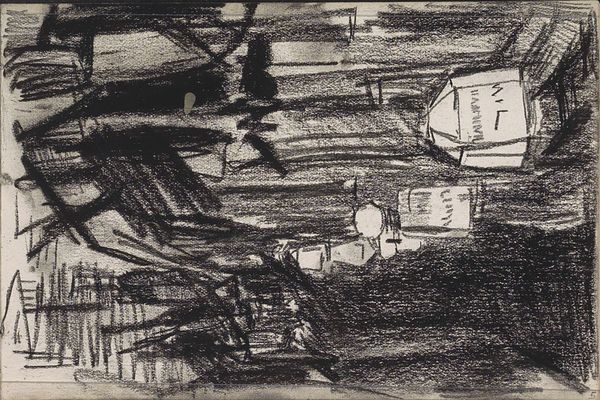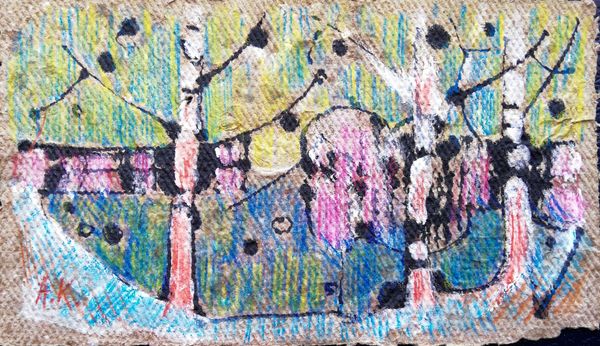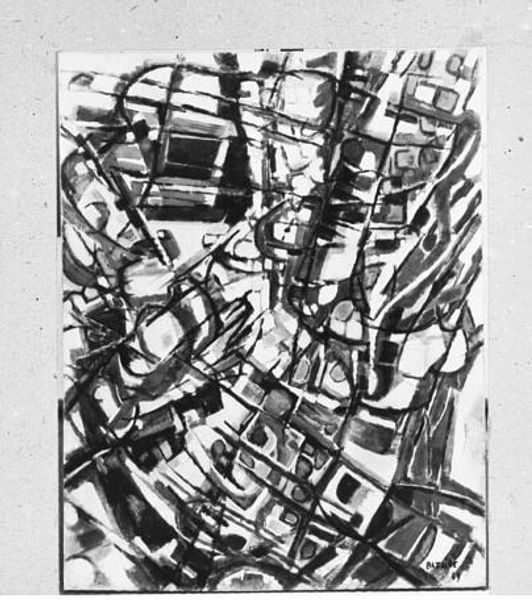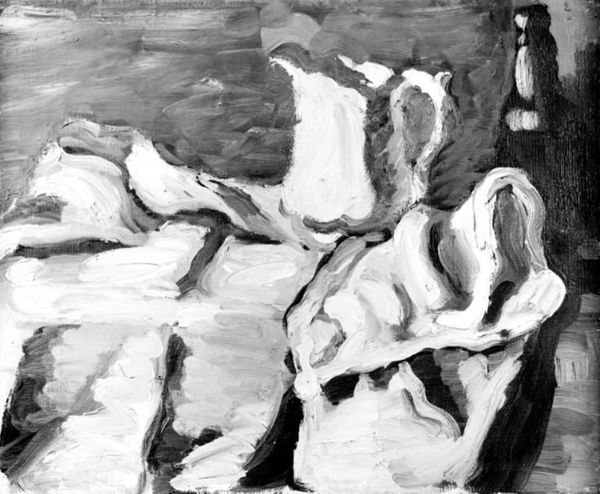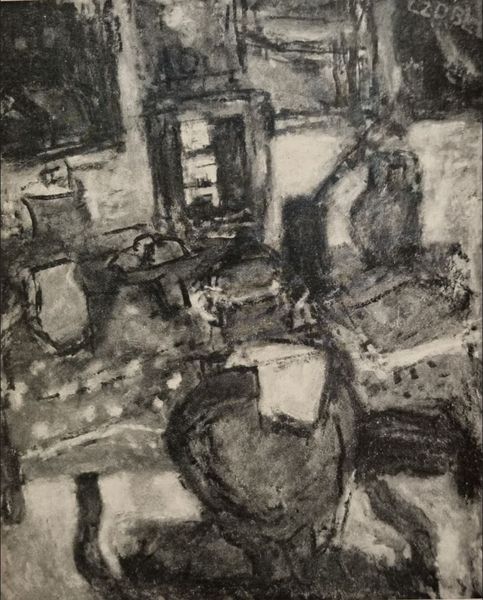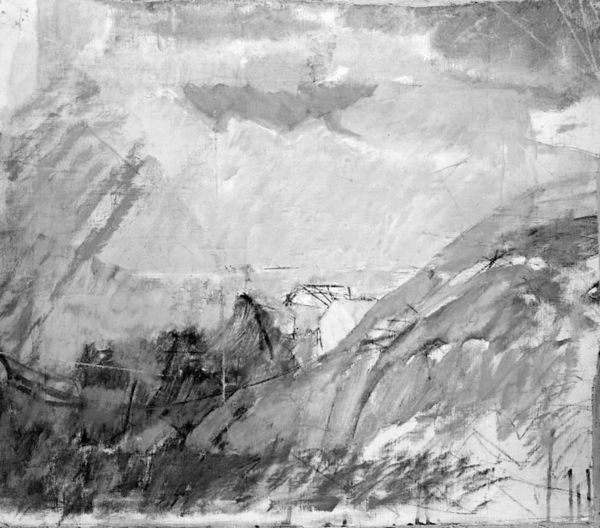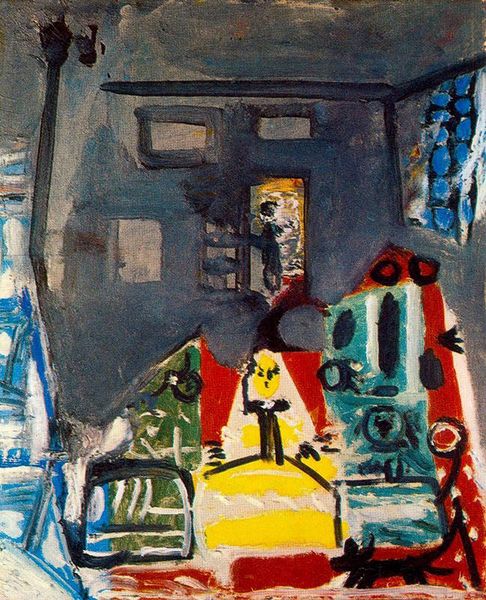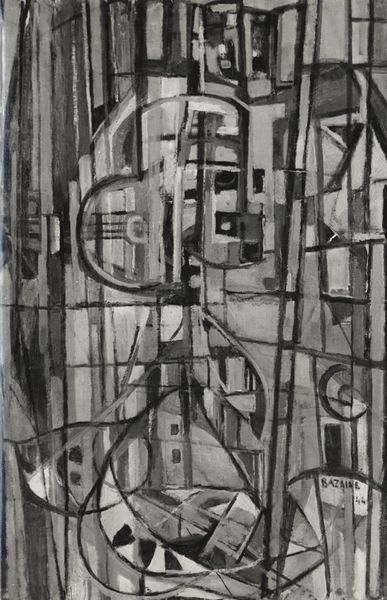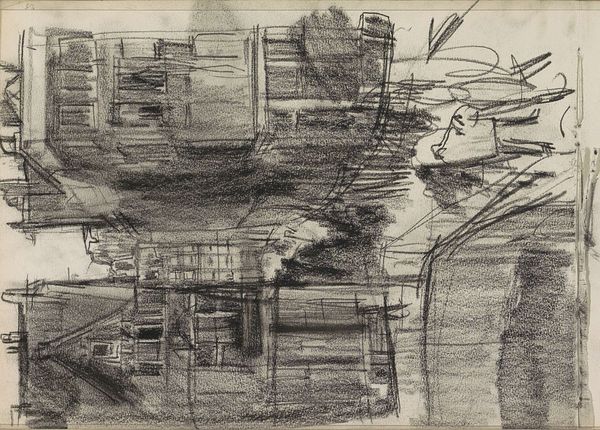
photography
#
urban landscape
#
abandoned
#
sculpture
#
charcoal drawing
#
charcoal art
#
photography
#
derelict
#
rough work
#
building art
#
urban life
#
charcoal
#
monochrome
Copyright: Martyl Langsdorf,Fair Use
Curator: Martyl Langsdorf's "Market Place No. 2, Barcelona," created in 1955, offers a fascinating glimpse into postwar Europe. Editor: It feels bleak, almost post-apocalyptic, despite being a marketplace. The monochromatic charcoal amplifies the rough work; the composition feels intentionally disordered. What strikes you most about it? Curator: The portrayal of urban life immediately stands out. Post-war Barcelona experienced rapid industrialization and social change. This market likely served as a crucial space for working-class communities. I see it reflecting the complexities and tensions inherent in that period of transformation. Editor: Absolutely. You see that echoed in the use of charcoal itself. Langsdorf seems less interested in clean lines and precise representation. It's all smudges and layered textures, echoing the grit and labor involved in creating and maintaining such a space. It makes me think of the workers' hands that built and sustained it. Curator: Indeed. This marketplace wasn't merely a place of commerce; it was a social hub where ideas and cultures intersected. Charcoal, as a readily available and relatively inexpensive material, democratizes art-making in some respect. Editor: I wonder about her choice to depict it with this derelict sense. Was she interested in the market as a center for community, or something else? There’s something almost alienating about how the scene’s represented here; as if it's already half abandoned or on the way to dereliction. Curator: Perhaps a critique of rapid urbanization. Sometimes what gets left behind in that process, especially community spaces like marketplaces which are, ironically, necessary for urbanization to happen in the first place. It really highlights how art shapes perceptions of our environment. Editor: True. Seeing it like this makes you think about all of the unseen hands and processes that come into play to create a bustling marketplace. Everything from material sourcing to construction to day-to-day life in and out of the marketplace that are reflected through the medium’s marks, erasures, and densities. Curator: Thinking about it, it is so interesting how a scene, typically associated with trade and communal exchange, becomes an illustration about society and societal change. Editor: Right. Art offers an entryway into these societal structures to examine how and why they endure in the face of cultural shifts and developments.
Comments
No comments
Be the first to comment and join the conversation on the ultimate creative platform.
